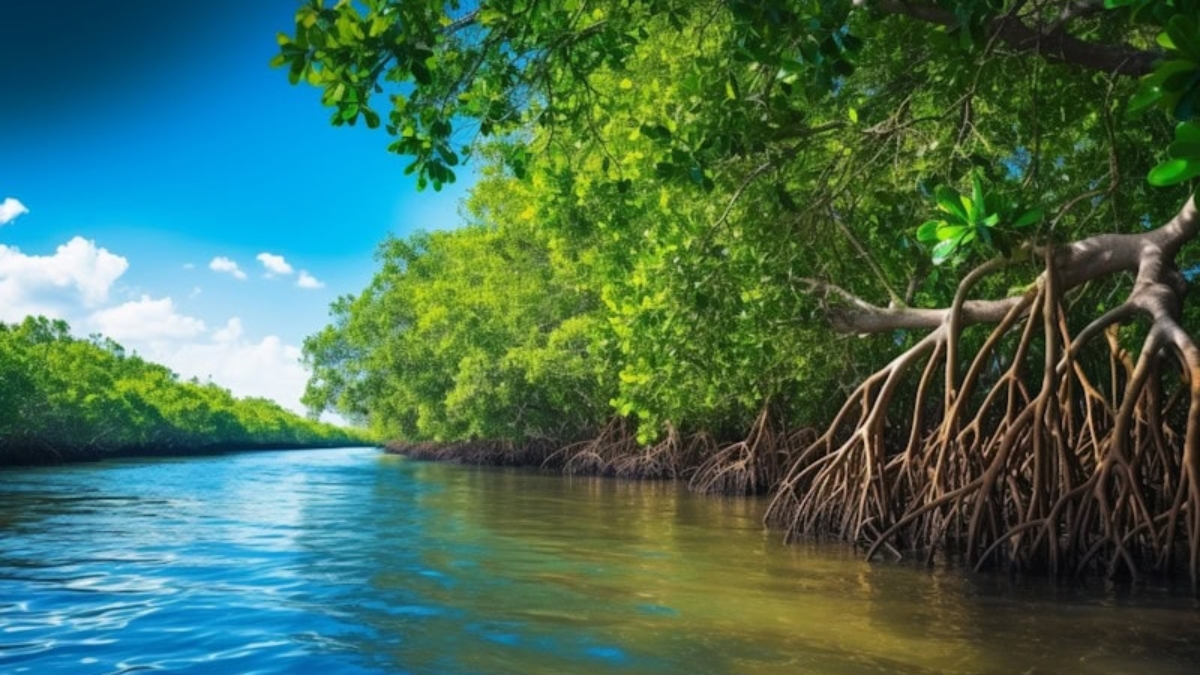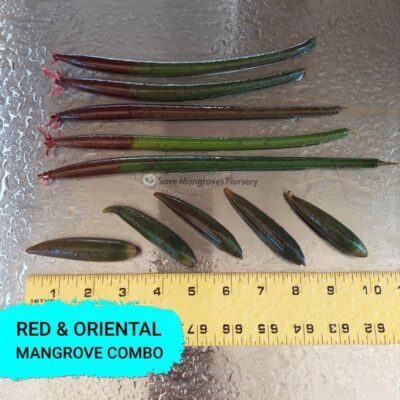Mangroves are incredible plants that play a vital role in coastal ecosystems. Known for their resilience in challenging environments, these trees and shrubs do more than just survive—they thrive, offering various ecological benefits. One of the most significant questions that arise for aquarium enthusiasts and environmentalists alike is: do mangroves clean water?
The short answer is yes, but the way they do it is fascinating and multi-faceted. In this article, we’ll dive into the mechanisms behind how mangroves clean water, their benefits in aquariums, and some practical tips for ensuring your mangroves are at their best.
How Do Mangroves Clean Water?
Natural Filtration
Mangroves have an exceptional ability to filter out pollutants from water. Their roots, which extend both above and below the waterline, trap sediments, heavy metals, and other contaminants. This natural filtration process is one of the reasons why mangroves are often referred to as the “kidneys” of coastal ecosystems.
Good: ✅
- Mangroves help reduce water pollution by trapping contaminants.
- Their roots stabilize sediment, preventing erosion and maintaining water clarity.
Bad: ❌
- In heavily polluted waters, mangroves may struggle to thrive, limiting their ability to filter effectively.
- Mangroves require specific conditions to perform optimally, which may not be present in every aquarium setup.
Absorption of Nutrients
Mangroves absorb excess nutrients, such as nitrogen and phosphorus, from the water through their roots. These nutrients, often from agricultural runoff or fish waste, can lead to algae blooms if left unchecked. By absorbing these nutrients, mangroves help maintain a balanced ecosystem in both natural habitats and aquariums.
Mangrove Fact: 🌟
Mangroves can absorb up to 90% of the nutrients in the water, making them incredibly effective at preventing algae overgrowth and maintaining water quality.
Oxygenation of Water
Mangroves contribute to oxygenating the water through their photosynthesis process. During the day, they absorb carbon dioxide and release oxygen, which benefits aquatic life. This oxygenation process is particularly beneficial in aquariums, where maintaining adequate oxygen levels is crucial for the health of fish and other aquatic organisms.
Good: ✅
- Mangroves help maintain oxygen levels in the water, promoting a healthy environment for fish and other aquatic life.
- They contribute to the overall balance of the aquarium ecosystem.
Bad: ❌
- If not properly cared for, mangroves can become stressed and may not oxygenate the water as effectively.
- Mangroves require sufficient light to perform photosynthesis, which may be a challenge in some aquarium setups.
The Role of Mangroves in Aquariums
Natural Water Filters
In an aquarium, mangroves act as natural water filters, much like they do in the wild. By absorbing nutrients and trapping sediments, they help maintain clear, clean water. This is particularly beneficial in saltwater and brackish tanks, where water quality can be challenging to manage.
From my experience as an aquarium enthusiast, I’ve seen firsthand how adding mangroves to a tank can dramatically improve water clarity and reduce the need for chemical filtration systems. It’s a win-win for both the tank’s inhabitants and the overall aesthetic.
Pros and Cons of Using Mangroves in Aquariums
Pros: ✅
- Natural Filtration: Mangroves help reduce the need for artificial filtration, making them an eco-friendly option.
- Aesthetic Appeal: They add a unique visual element to any tank, creating a more natural and serene environment.
- Water Quality Improvement: By absorbing excess nutrients, mangroves help prevent algae blooms and maintain balanced water chemistry.
Cons: ❌
- Slow Growth: Mangroves are slow growers, so it may take time to see their full benefits in your tank.
- Space Requirements: They need sufficient space for their roots to spread, which may be a challenge in smaller tanks.
- Specific Care Needs: Mangroves require proper lighting, water quality, and nutrient levels to thrive, which may require additional effort from the aquarist.
Tips for Growing Mangroves in Your Aquarium
If you’re considering adding mangroves to your aquarium, here are some tips to ensure they thrive:
- Provide Adequate Light: Mangroves need plenty of light to perform photosynthesis. Full-spectrum LED lights that mimic natural sunlight are ideal. Aim for 10-12 hours of light per day to keep your mangroves healthy.
- Monitor Water Quality: Regularly check the water parameters in your tank, including pH, salinity, and nutrient levels. Mangroves prefer slightly brackish water, but they can adapt to freshwater or saltwater environments with proper care.
- Use Nutrient-Rich Substrates: While mangroves can absorb nutrients from the water, providing a nutrient-rich substrate will support their growth. Root tabs or liquid fertilizers can also be beneficial.
- Allow Root Space: Mangroves need room for their roots to spread. Ensure your tank has enough space for the roots to grow without becoming cramped.
- Be Patient: Mangroves are slow-growing plants, so it may take time to see the full benefits. Patience and consistent care are key to success.
Mangrove Fact: 🌟
Mangroves have specialized roots called pneumatophores that stick out of the water and help the plant “breathe” by absorbing oxygen directly from the air.
Conclusion: Do Mangroves Clean Water?
Mangroves are nature’s water purifiers, playing a crucial role in maintaining water quality both in the wild and in aquariums. By filtering out pollutants, absorbing excess nutrients, and oxygenating the water, they contribute to a healthy, balanced ecosystem.
At Save Mangroves Nursery, we offer healthy Live Red Mangrove Plants that are ready to add to and naturally filter your Saltwater, Freshwater, or Brackish Aquarium tanks. We ship out to all 50 states daily, making it easy for you to enhance your aquarium with these remarkable plants. Whether you’re an experienced aquarist or just starting out, mangroves can make a valuable and beautiful addition to your tank.
Best seller products
-
18”-24” Red Mangroves With Roots & 2-4 Leaves
Price range: $34.99 through $87.99 -
10”-14” Red Mangroves With Roots & 2-4 Leaves
Price range: $19.99 through $47.99 -
28″ Red Mangrove Tree – Fully Mature Plant
Price range: $0.00 through $230.00 -
[RARE] Orange Oriental Mangroves Propagule Seeds
Price range: $19.99 through $79.99 -
30″ Red Mangrove Tree – Fully Mature Plant
Price range: $0.00 through $180.00 -
Red & Oriental Mangrove Combo Bundle
Price range: $29.99 through $44.99
 Cart is empty
Cart is empty 




![[RARE] Orange Oriental Mangroves Propagule Seeds](https://savemangroves.com/wp-content/uploads/2025/07/Oriental-Mangrove-Seeds-Save-Mangroves-Nursery-400x400.jpg)



Add a Comment
You must be logged in to post a comment